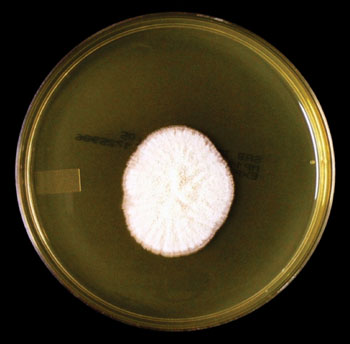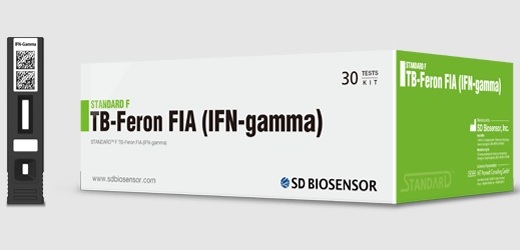Genomic Sequencing Identifies Deadly Bloodstream Infection
By LabMedica International staff writers
Posted on 06 Apr 2016
The differentiation between fungal infections originating from a single contaminated point source and those independently acquired from the environment is often difficult.Posted on 06 Apr 2016
Despite modern advances in technology to control fungal contamination in clinical settings, fungi are continuously implicated in clusters or outbreaks of infections particularly among immunosuppressed patients.

Image: Sarocladium kiliense after 10 days’ growth on Sabouraud-Dextrose Agar at 30 °C (Photo courtesy of Thunderhouse4-yuri).
An international team of scientists led by those at the Centers for Disease Control and Prevention (Atlanta, GA, USA) used whole-genome sequence typing (WGST) to investigate an outbreak of Sarocladium kiliense bloodstream infections (BSI) associated with receipt of contaminated anti-nausea medication among oncology patients in Colombia and Chile during 2013–2014. There were 25 outbreak isolates, 18 from patients and 7 from medication vials, and 11 control isolates unrelated to the outbreak, were subjected to WGST to elucidate a source of infection.
The 36 DNA samples were prepared for Illumina sequencing (Illumina, San Diego, CA, USA) by using the KAPA Biosystems Library Preparation with Standard PCR kit (KAPA Biosystems; Wilmington, MA, USA) protocol with a modified 8-bp index. All 36 libraries were sequenced to a read length of 100 bp on the Illumina HiSeq 2500 system. All outbreak isolates were nearly indistinguishable, less than five single-nucleotide polymorphisms, and more than 21,000 single-nucleotide polymorphisms were identified from unrelated control isolates, suggesting a point source for this outbreak.
The authors concluded that their study highlighted the utility of advanced molecular methods to investigate outbreaks involving rare fungi. Next-generation sequencing and bioinformatics analyses will remain critical molecular epidemiology tools in such epidemiologic investigations. David Engelthaler, PhD, Director of Programs and Operations for the Translational Genomic Research Institute (Flagstaff, AZ, USA) and coauthor of the study said, “The use of whole-genome sequence typing (WGST) to investigate fungal outbreaks has become integral to epidemiologic investigations. Our WGST analysis demonstrated that the patient isolates from Chile and Colombia were nearly genetically indistinguishable from those recovered from the unopened medication vials, indicating the likely presence of a single-source infection.” The study was published in the March 2016, issue of the journal Emerging Infectious Diseases.
Related Links:
Centers for Disease Control and Prevention
Illumina
Translational Genomic Research Institute







 assay.jpg)






